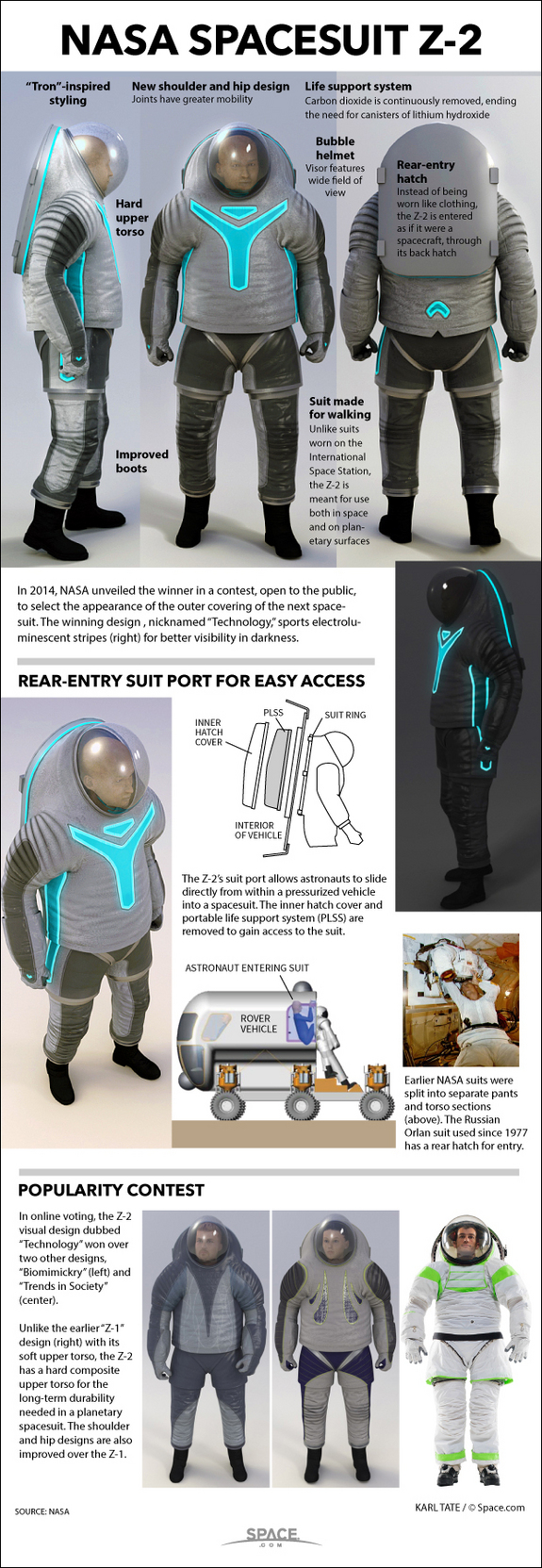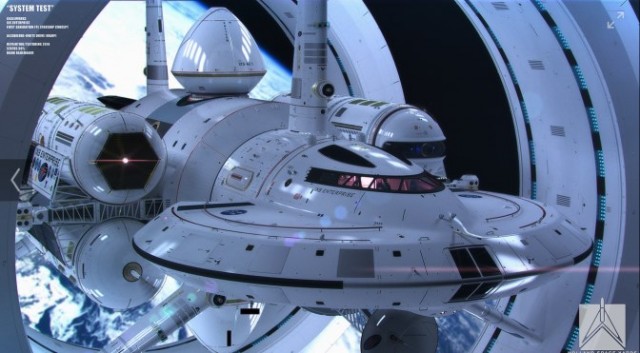Άγγελος
Επιφανές μέλος


Σημείωση: Το μήνυμα αυτό γράφτηκε 11 χρόνια πριν. Ο συντάκτης του πιθανόν να έχει αλλάξει απόψεις έκτοτε.
Άγγελος
Επιφανές μέλος


Barely six weeks after rolling troops into the Crimean Peninsula, an official from Vladimir Putin's Russia has announced the country's next expansion target: the Moon.
As reported by the Voice of Russia, Russian Deputy Prime Minister Dmitry Rogozin told the government daily Rossiiskaya Gazeta that establishing a permanent Moon base has become one of the country's top space priorities.
"The moon is not an intermediate point in the [space] race, it is a separate, even a self-contained goal," Rogozin reportedly said. "It would hardly be rational to make some ten or twenty flights to the moon, and then wind it all up and fly to the Mars or some asteroids."
Rogozin's comments were an obvious dig against the US space program. NASA flew its last manned mission to the Moon in 1972 and currently has no plans to return humans to the Earth's satellite. The space agency's next major objective is to rendezvous with an asteroid, and a manned mission to Mars is a perennial favorite topic among US politicians, even if they seem unwilling to provide NASA the funding needed for such an endeavor.
Russia, on the other hand, has a series of missions to the Moon in the planning stages, albeit unmanned ones for now. The first will be the Luna-25 rover, which is scheduled to launch in 2016. After that will come Luna-26, an orbiter that will map the lunar surface, followed by another rover that will explore the Moon's south pole.
But Russia's lunar ambitions don't end with robots. Earlier this week, Denis Lyskov, deputy director of the Russian space agency Roscosmos, told the Voice of Russia that work has begun on a new rocket that will be able to carry a manned spacecraft to the Moon.
"It requires a carrier rocket of extra-heavy class with carrying capacity of 80 tons to perform flights to the Moon," Lyskov said. "The program of such carrier rocket is being elaborated. The government has ordered to elaborate the program so that it could make a particular decision on it."
If a series of manned Russian Moon missions is successful, officials say Roscosmos plans to build a permanent lunar base toward the end of 2030. Or maybe that's 2040; sources differ. One thing is for sure, though, and that's that Russia has big Lunar plans.
"This process has the beginning, but has no end," Rogozin told Rossiiskaya Gazeta. "We are going to come to the Moon forever
Σημείωση: Το μήνυμα αυτό γράφτηκε 11 χρόνια πριν. Ο συντάκτης του πιθανόν να έχει αλλάξει απόψεις έκτοτε.
Άγγελος
Επιφανές μέλος


The wait is over. After years of development, the private spaceflight company SpaceX will unveil the manned version of its Dragon spacecraft tonight (May 28).
SpaceX CEO Elon Musk will reveal the design for the manned Dragon spacecraft tonight at 10 p.m. EDT/7 p.m. PDT (2 a.m. May 30 GMT) in a special invite-only event at the company’s rocket factory in Hawthorne, California. SpaceX has built the commercial crew capsule in a bid to fly astronauts on trips to and from the International Space Station for NASA.
You can watch the SpaceX Dragon unveiling live on Space.com, courtesy of SpaceX’s webcast, which will be streamed live on the company’s website. [Quiz: Do You Know SpaceX’s Dragon Spacecraft]
https://www.spacex.com/
Already tested as a cargo carrier, the Dragon spacecraft can also be fitted out to shuttle passengers to low orbit and to the International Space Station.Already tested as a cargo carrier, the Dragon spacecraft can also be fitted out to shuttle passengers to low orbit and to the International Space Station. See how SpaceX's Dragon capsules work in this SPACE.com infographic.
Credit: Karl Tate, SPACE.com ContributorView full size image
The Dragon V2, or Version 2 as the crewed Dragon capsule is called, is a gumdrop-shaped spacecraft designed to carry up to seven astronauts on trips to and from low-Earth orbit. Its maximum crew capacity matches that of NASA’s space shuttles, and is more than twice the capacity of Russia’s three-person Soyuz space capsules. Since the retirement of NASA’s shuttle program in 2011, the Russian Soyuz has been the only vehicle available for space station trips.
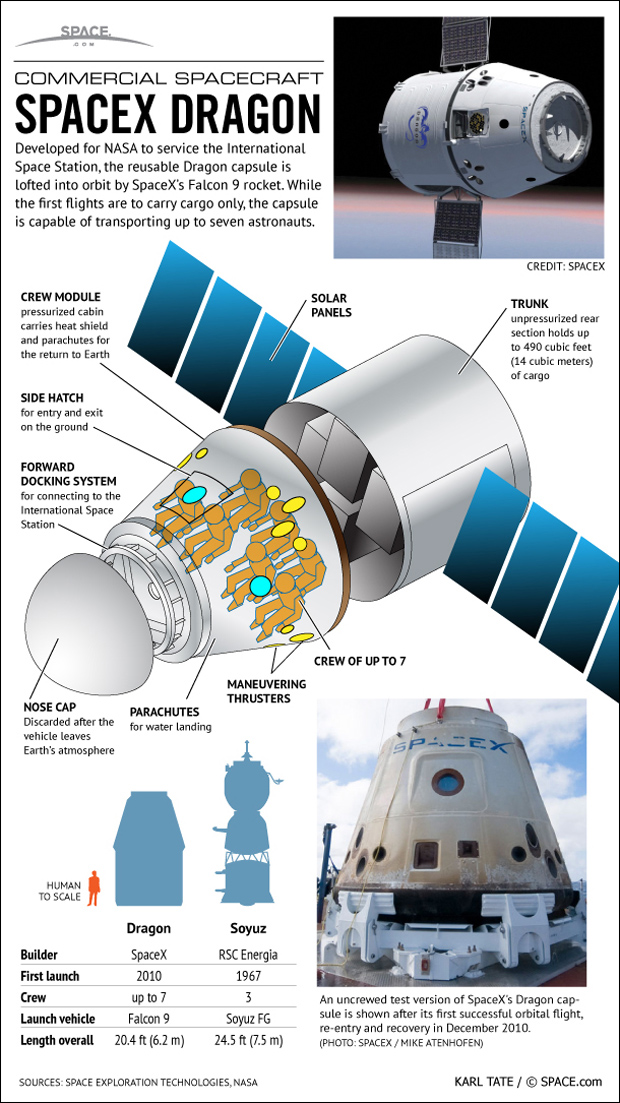
Σημείωση: Το μήνυμα αυτό γράφτηκε 11 χρόνια πριν. Ο συντάκτης του πιθανόν να έχει αλλάξει απόψεις έκτοτε.
Άγγελος
Επιφανές μέλος


https://sploid.gizmodo.com/first-look-at-dragon-v2-the-first-manned-spaceship-by-1583376826
Here's everything you need to know about the new SpaceX Dragon V2. It's really an amazing machine, capable of transporting seven astronauts to orbit and return to anywhere on Earth, soft-landing with the accuracy of an helicopter using retrorockets and retractile legs.
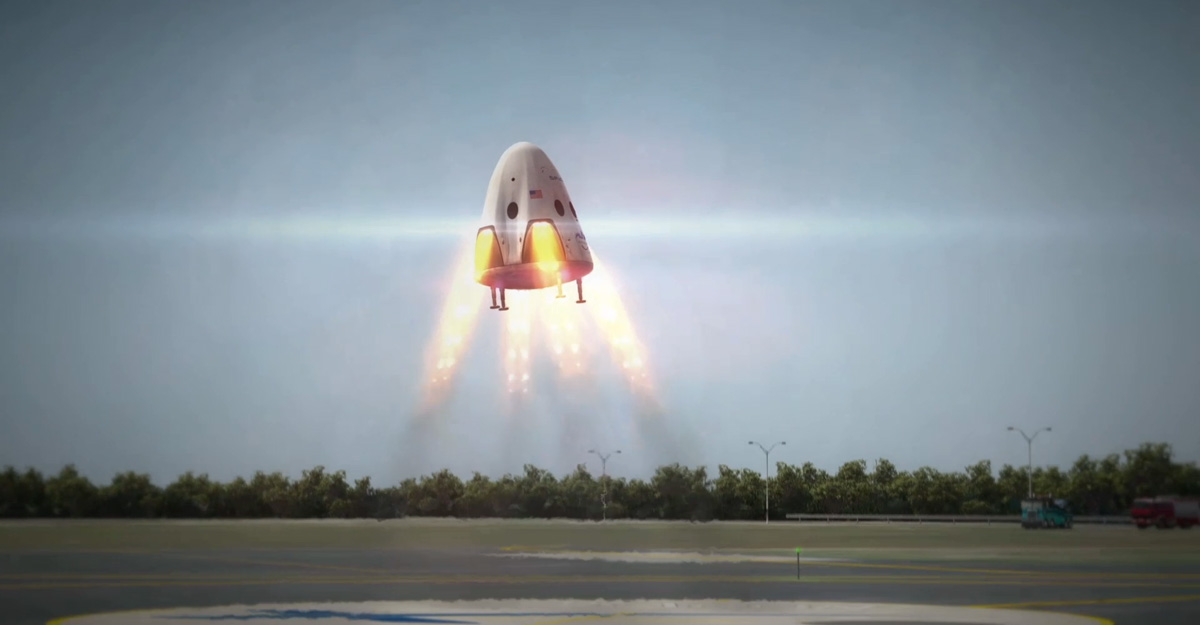
Σημείωση: Το μήνυμα αυτό γράφτηκε 11 χρόνια πριν. Ο συντάκτης του πιθανόν να έχει αλλάξει απόψεις έκτοτε.
Άγγελος
Επιφανές μέλος


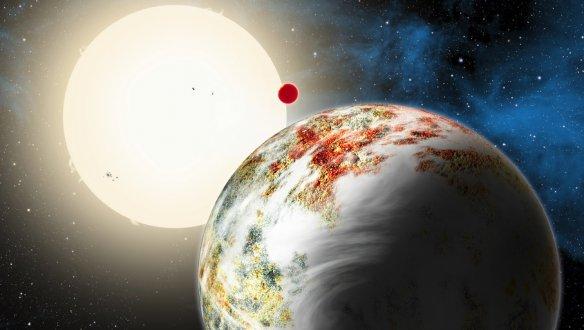
Astronomers have discovered a new type of planet - a rocky world weighing 17 times as much as Earth. Theorists believed such a world couldn't form because anything so hefty would grab hydrogen gas as it grew and become a Jupiter-like gas giant. This planet, though, is all solids and much bigger than previously discovered "super-Earths," making it a "mega-Earth."
"We were very surprised when we realized what we had found," says astronomer Xavier Dumusque of the Harvard-Smithsonian Center for Astrophysics (CfA), who led the data analysis and made the discovery.
"This is the Godzilla of Earths!" adds CfA researcher Dimitar Sasselov, director of the Harvard Origins of Life Initiative. "But unlike the movie monster, Kepler-10c has positive implications for life."
The team's finding was presented at a press conference at a meeting of the American Astronomical Society (AAS).
The newfound mega-Earth, Kepler-10c, circles a sunlike star once every 45 days. It is located about 560 light-years from Earth in the constellation Draco. The system also hosts a 3-Earth-mass "lava world," Kepler-10b, in a remarkably fast, 20-hour orbit.
Kepler-10c was originally spotted by NASA's Kepler spacecraft. Kepler finds planets using the transit method, looking for a star that dims when a planet passes in front of it. By measuring the amount of dimming, astronomers can calculate the planet's physical size or diameter. However, Kepler can't tell whether a planet is rocky or gassy.
Kepler-10c was known to have a diameter of about 18,000 miles, 2.3 times as large as Earth. This suggested it fell into a category of planets known as mini-Neptunes, which have thick, gaseous envelopes.
The team used the HARPS-North instrument on the Telescopio Nazionale Galileo (TNG) in the Canary Islands to measure the mass of Kepler-10c. They found that it weighed 17 times as much as Earth - far more than expected. This showed that Kepler-10c must have a dense composition of rocks and other solids.
"Kepler-10c didn't lose its atmosphere over time. It's massive enough to have held onto one if it ever had it," explains Dumusque. "It must have formed the way we see it now."
Planet formation theories have a difficult time explaining how such a large, rocky world could develop. However, a new observational study suggests that it is not alone.
Also presenting at AAS, CfA astronomer Lars A. Buchhave found a correlation between the period of a planet (how long it takes to orbit its star) and the size at which a planet transitions from rocky to gaseous. This suggests that more mega-Earths will be found as planet hunters extend their data to longer-period orbits.
The discovery that Kepler-10c is a mega-Earth also has profound implications for the history of the universe and the possibility of life. The Kepler-10 system is about 11 billion years old, which means it formed less than 3 billion years after the Big Bang.
The early universe contained only hydrogen and helium. Heavier elements needed to make rocky planets, like silicon and iron, had to be created in the first generations of stars. When those stars exploded, they scattered these crucial ingredients through space, which then could be incorporated into later generations of stars and planets.
This process should have taken billions of years. However, Kepler-10c shows that the universe was able to form such huge rocks even during the time when heavy elements were scarce.
"Finding Kepler-10c tells us that rocky planets could form much earlier than we thought. And if you can make rocks, you can make life," says Sasselov.
This research implies that astronomers shouldn't rule out old stars when they search for Earth-like planets. And if old stars can host rocky Earths too, then we have a better chance of locating potentially habitable worlds in our cosmic neighborhood.
Σημείωση: Το μήνυμα αυτό γράφτηκε 11 χρόνια πριν. Ο συντάκτης του πιθανόν να έχει αλλάξει απόψεις έκτοτε.
Άγγελος
Επιφανές μέλος


Ενας τεράστιος αστεροειδής που έχει το εύγλωττο παρατσούκλι «Κτήνος», θα περάσει αρκετά κοντά από τη Γη το πρωί της Κυριακής 8 Ιουνίου. Ο αστεροειδής 2014 HQ124 είναι μεγαλύτερος από ένα γήπεδο, αλλά δεν απειλεί τον πλανήτη μας, σύμφωνα με τους υπολογισμούς των αστρονόμων, καθώς θα περάσει σε απόσταση περίπου 1,15 εκατ. χιλομέτρων, δηλαδή σχεδόν τρεις φορές όσο η απόσταση Γης-Σελήνης.
Πελώριος
Ο πελώριος αστεροειδής, διαμέτρου περίπου 350 μέτρων, ανακαλύφθηκε φέτος τον Απρίλιο από το υπέρυθρο διαστημικό τηλεσκόπιο WISE. Ο γιγάντιος βράχος ταξιδεύει με ταχύτητα 14 χιλιομέτρων το δευτερόλεπτο και θα φθάσει στο κοντινότερο σημείο από τον πλανήτη μας περίπου στις 9 το πρωί της Κυριακής (ώρα Ελλάδος).
Οι αστρονόμοι επεσήμαναν το -μάλλον ανησυχητικό- γεγονός ότι ένας τέτοιος αστεροειδής-μαμούθ ήταν άγνωστος ως τώρα και έγινε αντιληπτός μόλις δύο μήνες προτού περάσει σχετικά κοντά από τη Γη. Το γεγονός αυτό αποτελεί άλλη μία υπενθύμιση για τους κινδύνους που απειλούν τον πλανήτη μας ανά πάσα ώρα και στιγμή.
«Ο HQ124 είναι τουλάχιστον δέκα φορές μεγαλύτερος, ίσως και 20 φορές, από τον αστεροειδή που τραυμάτισε χίλιους ανθρώπους πέρυσι στο Τσελιάμπινσκ της Σιβηρίας. Αν επρόκειτο να μας χτυπήσει, η ενέργεια που θα απελευθερωνόταν, δεν θα μετριόταν σε χιλιοτόνους, όπως οι ατομικές βόμβες που έδωσαν τέλος στον Β' Παγκόσμιο Πόλεμο, αλλά σε μεγατόνους, όπως οι κατοπινές βόμβες υδρογόνου», δήλωσε ο αστρονόμος Μπομπ Σέρμαν του αστρονομικού παρατηρητηρίου Slooh.
Η αναζήτηση
Η NASA εκτιμά ότι έχει ανακαλυφθεί πάνω από το 90% των κοντινών στη Γη αστεροειδών που έχουν το μέγεθος βουνού ή άλλων ουρανίων σωμάτων διαμέτρου άνω του ενός χιλιομέτρου. Ένας τέτοιος τεράστιος βράχος, αν ποτέ έπεφτε στον πλανήτη μας, θα προκαλούσε ανυπολόγιστες καταστροφές.
Οι μικρότεροι αστεροειδείς είναι πιο δύσκολο να εντοπιστούν. Υπολογίζεται ότι γύρω στους 15.000 (διαμέτρου περίπου 140 μέτρων) γυροφέρνουν τη Γη κατά καιρούς και από αυτούς μόνο το 30% έχει βρεθεί. Όσον αφορά τους ακόμη μικρότερους, με διάμετρο κάτω των 30 μέτρων, υπάρχουν πάνω από ένα εκατομμύριο που πλησιάζουν τον πλανήτη μας και από αυτούς ούτε το 1% δεν έχει ανιχνευτεί.
Σημείωση: Το μήνυμα αυτό γράφτηκε 11 χρόνια πριν. Ο συντάκτης του πιθανόν να έχει αλλάξει απόψεις έκτοτε.
Άγγελος
Επιφανές μέλος


Σημείωση: Το μήνυμα αυτό γράφτηκε 11 χρόνια πριν. Ο συντάκτης του πιθανόν να έχει αλλάξει απόψεις έκτοτε.
Άγγελος
Επιφανές μέλος


SCIM MIssion Craft
Pin It SCIM - Sample Collection to Investigate Mars - will return the first samples of Martian materials to Earth without the complexity and risk of landing, and at a fraction of the cost.
BOSTON — A private mission could return Martian samples to Earth by 2020 without even touching down on the Red Planet.
The BoldlyGo Institute, a Colorado-based nonprofit, is working to develop the Sample Collection to Investigate Mars (SCIM) mission, which would send a spacecraft skimming through the atmosphere of Mars to gather dust and return home, without the difficulty of landing. SCIM could launch as soon as 2018, possibly returning samples to Earth in July 2020.
"It sounds very daring, but it's really very doable," Laurie Leshing, a member of the BoldlyGo board of directors, said during a presentation June 3 at the 224th American Astronomical Meeting in Boston. "This is something we can do today." [Video: Mission Will Not Land On Red Planet]
A dusty 'catcher's mitt'
Scheduled to interact with the planet during the dustiest season of the year, the spacecraft would dip down to between 22 and 25 miles (35 and 40 kilometers) inside the Martian atmosphere. It would carry cells filled with aerogel that would act "as a catcher's mitt," Leshing said, as it hurtled through the Martian sky.
SCIM Particle Capture DevicePin It The Sample Collection to Investigate Mars (SCIM) particle capture device proposed by the BoldlyGo Institute relies on cells filled with aerogel inspired by the successful Stardust sample return mission shown in this image.
Credit: NASA View full size image
The gel would scoop up thousands of tiny particles, heat-sterilizing them before bringing them inside the capsule, where they could travel safely to Earth. Several different designs for the "catcher's mitt" are still under consideration.
The sterilization process would ensure the material could be safely returned to Earth without contamination concerns, while still preserving scientific objectives, Leshing told Space.com. The mission would follow the guidelines for international planetary protection protocols established by the Committee on Space Research.
Although the atmosphere doesn't seem like the ideal place to learn about the surface of Mars, dust storms on the Red Planet stir up material affected by weathering, precipitation and volcanism.
"Think of it as a microscopic average rock collection from Mars," Leshing said.
Back on Earth, scientists could process these Martian materials to an extent that just can't be accomplished on Mars, allowing many researchers around the world to perform a variety of tests. Indeed, most scientists regard sample-return as the best way to look for signs of life on Mars. [The Search for Life on Mars (A Photo Timeline)]
"On Earth, we can literally slice up a sample in dozens of pieces," Leshing said.
Because the SCIM craft wouldn't have to land, it wouldn't have the blunted appearance of missions like NASA's Curiosity rover, which touched down in August 2012. The bullet-shaped SCIM body wouldn't need to slow down, because it would pass through the atmosphere without stopping.
After passing through the Martian atmosphere, SCIM would emerge on the far side of the planet. It would engage in a slight orbital correction maneuver, using its 22-Newton thruster, and return to Earth, where the sample would be dropped into the desert.
Σημείωση: Το μήνυμα αυτό γράφτηκε 11 χρόνια πριν. Ο συντάκτης του πιθανόν να έχει αλλάξει απόψεις έκτοτε.
Stavri_
Τιμώμενο Μέλος



Παρεπιπτόντως , η ιστοσελίδα της NASA είναι φοβερή!
Σημείωση: Το μήνυμα αυτό γράφτηκε 11 χρόνια πριν. Ο συντάκτης του πιθανόν να έχει αλλάξει απόψεις έκτοτε.
Άγγελος
Επιφανές μέλος



δες και αυτο skylon..Το ονειρο..ένα αεροπλανο που να πηγαινει στο διαστημα..!

Σημείωση: Το μήνυμα αυτό γράφτηκε 11 χρόνια πριν. Ο συντάκτης του πιθανόν να έχει αλλάξει απόψεις έκτοτε.
Άγγελος
Επιφανές μέλος


ελευθερη πτωση..
Σημείωση: Το μήνυμα αυτό γράφτηκε 11 χρόνια πριν. Ο συντάκτης του πιθανόν να έχει αλλάξει απόψεις έκτοτε.
Stavri_
Τιμώμενο Μέλος


Κάτι άλλο που διάβασα σήμερα στην Καθημερινή και μου προσέλκυσε το ενδιαφέρον είναι η πιθανότητα σύμφωνα με τους επιστήμονες ύπαρξης τεράστιων ωκεανών κάτω από συμπαγή στρώματα πάγου που καλύπτουν τις επιφάνειές τους στον Τιτάνα (δορυφόρο του Κρόνου) και στην Ευρώπη (δορυφόρο του Δία). Μάλιστα η NASA προσανατολίζεται πολύ σοβαρά στην κατασκευή και αποστολή ρομποτικού υποβρυχίου που θα εξερευνήσει τους ωκεανούς μεθανίου που υπάρχουν στον Τιτάνα. Σύμφωνα με τα λόγια του αστροφυσικόυ κ. Δανέζη, η μέση θερμοκρασία του Τιτάνα επιτρέπει στο μεθάνιο να υπάρχει σε υγρή, αέρια και στερεή μορφή, όπως το νερό στη Γη, και παρουσιάζει, σε αντιστοιχία με τον γήινο κύκλο του νερού, τον κύκλο του μεθανίου. Από το 1997 η Nasa σύμφωνα με τα αποτελέσματα του γνωστού διαστημικού σκάφους Cassini,κατέληξε στο συμπέρασμα ότι ο Τιτάνας έχει έναν γιγάντιο υπόγειο ωκεανό και δείχνει να είναι μεγαλύτερος από όσο όλοι οι ωκεανοί της Γης μαζί. Μιλάμε βέβαια για ωκεανούς H-C και όχι νερού. Και πέρα από την πιθανότητα ύπαρξης κάποιων μορφών-μικροοργανισμών, αυτό που μου έκανε εντύπωση είναι ότι δεδομένου πως αυτός ο όγκος είναι σχεδόν 40 φορές μεγαλύτερος από όλα τα γνωστά αποθέματα πετρελαίου και φυσικού αερίου στη Γη, θα ήταν σπουδαίο να μπορούσε ο Τιτάνας να καταστεί στο μέλλον το μεγάλο κοίτασμα ενέργειας που θα σώσει ενεργειακά τη Γη. Βέβαια το μεγάλο ερώτημα που περιμένει λύση, σύμφωνα πάντα με τον κ. Δανέζη, είναι πώς θα μεταφερθούν οι υδρογονάνθρακες αυτοί από τον Τιτάνα στη Γη για χρήση.
Πάντως πέρα από το απίθανο (θα μπορούσε να ισχυριστεί κανείς) της αξιοποίησης του Τιτάνα( και γενικά των άστρων-γαλαξιών), σαν ιδέα εμένα μου φαίνεται τόσο εντυπωσιακή που αν υλοποιούνταν θα μιλάγαμε για σωτηρία του γήινου οικοσυστήματος. Βέβαια, όλα αυτά ακόμα ζουν στη σφαίρα της φαντασίας μας μιας και έχουμε μέλλον ακόμα στην εξέλιξη των επιστημών-τεχνολογιών...
Σημείωση: Το μήνυμα αυτό γράφτηκε 11 χρόνια πριν. Ο συντάκτης του πιθανόν να έχει αλλάξει απόψεις έκτοτε.
Άγγελος
Επιφανές μέλος



για τους υπογειους ωκεανους του Τιτανα δεν ειχα ακουσει..για την ευρωπη οκ..
στις επομενες-λιγες- δεκαετιες θα κατακτησουμε το ηλιακο συστημα..εδω θα ειμαστε να τα δουμε..και να τα ζησουμε..

ηδη η νασα πχ ψαχνει τροπο να πιασει αστεροειδεις για να τους αξιοποιησουν εταιριες για να τους διωξει μην μας χτυπησουν κλπ..
και για τον Τιτάνα.
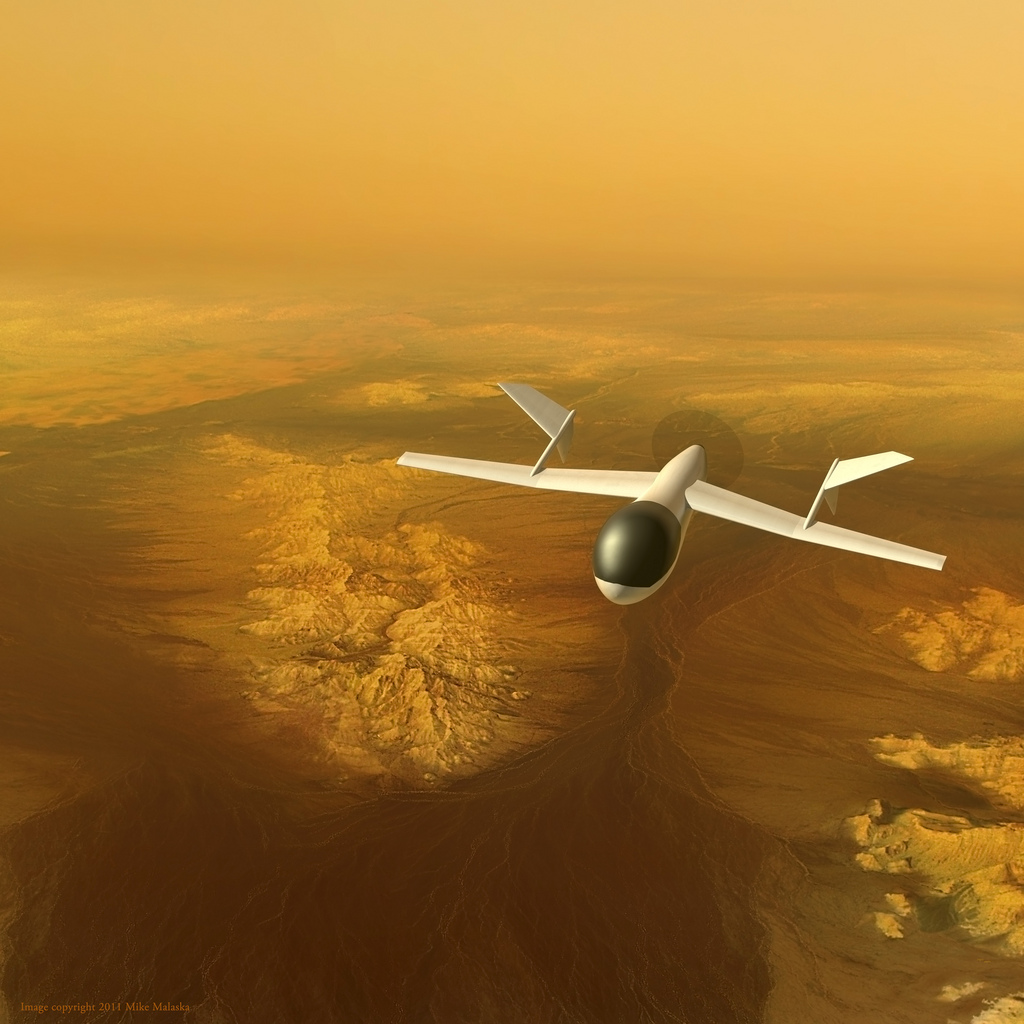
https://www.spacedaily.com/reports/N...pter_drone_to_look_for_life_on_Titan_999.html
NASA considers sending quadcopter drone to look for life on Titan
by Staff Writers
Moscow (RIA Novosti) Jun 23, 2014
Although Titan's landscape presents one of the more intriguing potential habitats for life in our solar system, there are plenty of reasons to be skeptical. The moon's seas are comprised of liquid ethane or methane, while the atmosphere is much colder than Earth's and made up of hydrogen cyanide.
While one NASA probe whizzes by Saturn's moon Titan on Thursday to analyze its atmosphere, the American space agency is also considering a plan to send a quadcopter drone capable of searching for life.
The ambitious idea was outlined by Larry Matthies, a research scientist and supervisor at NASA's Jet Propulsion Lab in California, and involves a drone that would be capable of flying out of a lander or balloon. The drone would explore the moon's landscape and seas, collect samples, and return to the "mothership" in order to recharge its batteries and submit whatever it collects for analysis.
If successful, the new plan could drastically change the way humans explore space. Current rovers on Mars are akin to moving laboratories, but their grounded nature means they can be rather limited when it comes to exploring terrain. The 22-pound drone conceived by Matthies would eliminate that barrier with flight capability, allegedly at much lower costs than other options.
As quoted by Gizmodo, he described the plan as follows: "We propose a mission study of a small (< 10 kg) rotorcraft that can deploy from a balloon or lander to acquire close-up, high resolution imagery and mapping data of the surface, land at multiple locations to acquire microscopic imagery and samples of solid and liquid material, return the samples to the mothership for analysis, and recharge from an RTG on the mothership to enable multiple sorties."
Matthies also noted that while this kind of plan would not have been feasible even just a few years ago, advancements in drone technology and other robotics have "revolutionized" older mission concepts, meaning sending a drone capable of exploring Titan is now a real possibility. Options are also available regarding exactly what form the mission takes. NASA could either have the drone operate out of an airborne balloon-like mothership or out of a land-based vehicle.
"For a lander mission, it enables detailed studies of a large area around the lander, providing context for the micro-images and samples; with precision landing near a lake, it potentially enables sampling solid and liquid material from one lander," he said.
"For a balloon mission, it enables surface investigation and sampling with global reach without requiring a separate lander or that the balloon be brought to the surface, which has potential for major cost savings and risk reduction."
According to the Huffington Post, NASA has awarded Matthies' team $100,000 to continue working on designs for the unmanned concept, which includes a mothership outfitted with a nuclear reactor.
Still, any lift-off dates are still a long ways into the future. Although technology has gotten to the point where such a plan can be planned, it still needs to be developed further. The agency is hoping a launch sometime in the 2040s would be possible.
Meanwhile, NASA's Cassini probe is scheduled to fly by Titan on Thursday and bounce radio signals off its surface for the second time in two months. The mission is intended to reveal more information about the moon's atmosphere and lakes, which could come in handy for future missions and determining whether life could exist in its hydrocarbon seas.
"We held our breath as Cassini turned to beam its radio signals at the lakes," Cassini radio science team member Essam Marouf said, referring to the May mission, according to Space.com. "We knew we were getting good quality data when we saw clear echoes from Titan's surface. It was thrilling."
Although Titan's landscape presents one of the more intriguing potential habitats for life in our solar system, there are plenty of reasons to be skeptical. The moon's seas are comprised of liquid ethane or methane, while the atmosphere is much colder than Earth's and made up of hydrogen cyanide. Cassini has, however, revealed the possibility that liquid water may exist under the moon's icy shell, and there's speculation other forms of life could be present.
Source: RIA Novosti
Σημείωση: Το μήνυμα αυτό γράφτηκε 11 χρόνια πριν. Ο συντάκτης του πιθανόν να έχει αλλάξει απόψεις έκτοτε.
Stavri_
Τιμώμενο Μέλος


Πάντως τα μέχρι τώρα τα ευρήματα δείχνουν ότι στην επιφάνεια του Άρη υπήρχε νερό και το περιβάλλον ήταν κατάλληλο για την διαβίωση μικροοργανισμών.
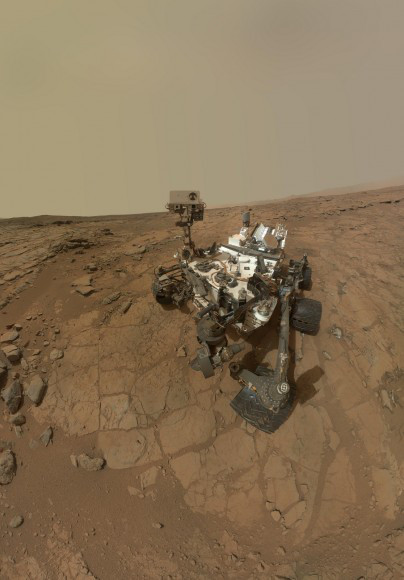
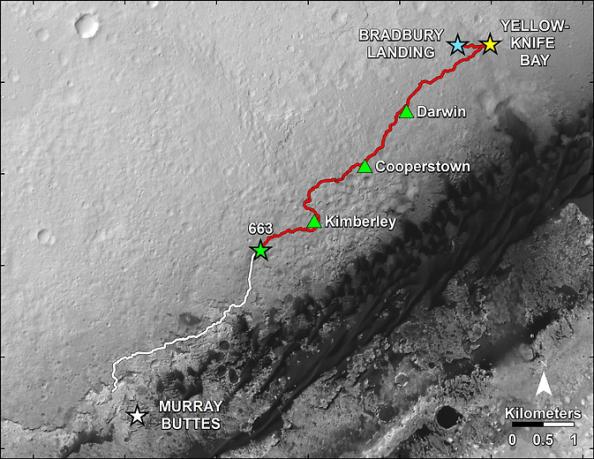
Σημείωση: Το μήνυμα αυτό γράφτηκε 11 χρόνια πριν. Ο συντάκτης του πιθανόν να έχει αλλάξει απόψεις έκτοτε.
Άγγελος
Επιφανές μέλος


Project 'Red Dragon': Mars Sample-Return Mission Could Launch in 2022 with SpaceX Capsule
Scientists have blueprinted a low-cost Mars sample-return mission that would use a souped-up Dragon capsule from the private spacefligth company SpaceX and the firm's planned Falcon Heavy rocket to get to the Red Planet by the early 2020s.
The new study demonstrates the viability of the entry, descent and landing of the unmanned Dragon space capsule at Mars. Moreover, the spacecraft's descent technique would help set the stage for future human missions to the Red Planet, researchers said.
The idea is to leverage emerging commercial capabilities to achieve Mars sample-return (MSR) without breaking the bank, perhaps in 2022. Most scientists regard a sample-return trip as a "Holy Grail" mission — the best way to look for signs of past or present life on the Red Planet. [See more photos of a potental Red Dragon mission to Mars with SpaceX gear]
For the last few years, more than a dozen experts engaged in the appraisal, which was undertaken as an internal study at NASA's Ames Research Center in Moffett Field, Calif. They detailed the results at the Institute of Electrical and Electronics Engineers (IEEE) 2014 Aerospace Conference, held March 1-8 in Big Sky, Mont.
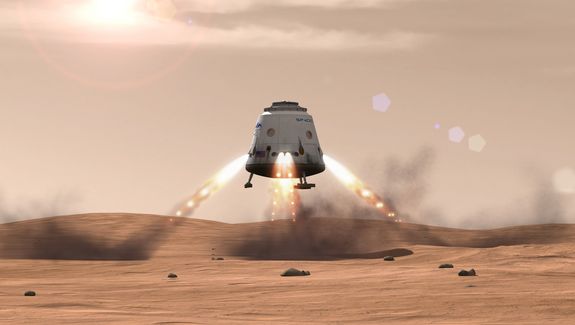
Σημείωση: Το μήνυμα αυτό γράφτηκε 11 χρόνια πριν. Ο συντάκτης του πιθανόν να έχει αλλάξει απόψεις έκτοτε.
Άγγελος
Επιφανές μέλος


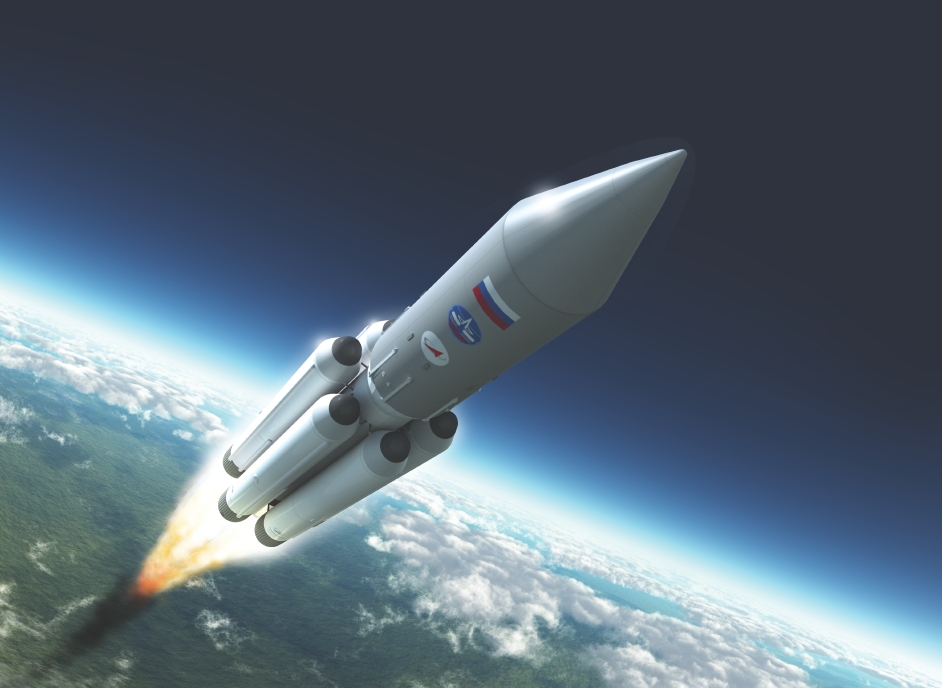
First test launch of Russia's Angara rocket may be conducted on June 27
First test launch of Russia's Angara rocket may be conducted on June 27
Photo: RIA Novosti
The first test launch of Russia's Angara light-weight rocket, initially set for June 25, may be conducted from the Plesetsk Cosmodrone in the Arkhangelsk region on June 27, a Russian space rocket industry source told Interfax-AVN.
"Tomorrow the state commission is supposed to make a final decision concerning a date for the Angara launch. It is expected to set the launch for June 27, instead of June 25, as was planned earlier," the source said.
He blamed organizational reasons, not technical difficulties, for the possible postponement.
A universal family of light, medium and heavy-lift Angara launchers is being developed for lifting into orbit practically the entire range of payloads of the Russian Defense Ministry in the designated range of altitudes and orbit inclinations, including the geostationary orbit, and for guaranteeing the genuine independence of Russian military space programs.
Angara launchers will not be using aggressive or toxic fuel, which will significantly improve environmental safety both in the areas around the spaceport and in the zone where rocket fragments fall.
Read more: https://voiceofrussia.com/news/2014_...gara-rocket-may-be-conducted-on-June-27-7161/
δεν ειναιο πανω πυραυλος..αλλα ο πυρηνας μονο..ο μεγαλος μπορει να παει φεγγαρι κλπ.
webcast εκτοξευσης 6 δορυφορων ..spacex falcon..
https://www.spacex.com/webcast/
Σημείωση: Το μήνυμα αυτό γράφτηκε 11 χρόνια πριν. Ο συντάκτης του πιθανόν να έχει αλλάξει απόψεις έκτοτε.
Άγγελος
Επιφανές μέλος



Ενα μυστήριο καλύπτει μία από τις λίμνες του Τιτάνα, του μεγαλύτερου από τους 62 δορυφόρους του Κρόνου, σύμφωνα με τη ΝΑΣΑ. Μη μπορώντας να αποφανθούν με σιγουριά για τη φύση του οι επιστήμονες για την ώρα το αποκαλούν το «μαγικό νησί». Μια λευκή επιφάνεια έκτασης 190 τετραγωνικών χιλιομέτρων στη Λιγεία λίμνη εντοπίστηκε σε μία φωτογραφία του διαστημικού σκάφους Κασίνι το οποίο βρίσκεται σε τροχιά γύρω από τον Κρόνο. Η Λιγεία είναι η δεύτερη μεγαλύτερη του Τιτάνα, με μέσο βάθος 150 μέτρων και εκτείνεται για εκατοντάδες χιλιόμετρα στο βόρειο ημισφαίριο του δορυφόρου.
Σύμφωνα μετους επιστήμονες της αποστολής, είτε πρόκειται για παγόβουνο, είτε για κάποιο υλικό κάτω από την επιφάνεια, ή για φυσαλίδες ή ακόμα για κύμματα. Από τα μέχρι σήμερα στοιχεία, φαίνεται πως οι παγερές λίμνες του Τιτάνα, γεμάτες από υγρό μεθάνιο και αιθάνιο, είναι ήρεμες σα γυαλί και δεν έχει ανιχνευτεί ποτέ κυματισμός μεγαλύτερος του ενός χιλιοστού.
Σημείωση: Το μήνυμα αυτό γράφτηκε 11 χρόνια πριν. Ο συντάκτης του πιθανόν να έχει αλλάξει απόψεις έκτοτε.
Άγγελος
Επιφανές μέλος


σκεφτομουν..
το 2016-17 θα ειναι ετοιμα τα επανδρωμενα ιδιωτικα διαστημικα οχηματα dragon,dreamchaser, cst-100 κλπ
τοτε θα γινει και η πρωτη πτηση του space lauch system με το ευρωπαικο service module
τοτε θα εχει την πρωτη αποστολη δορυφορων ο falcon heavy και η raptor μεγαλη μηχανηαν ειναι ετοιμη.οχι ομως και ο πυραυλος
κοινως..οι ιδιωτες υπερκτιμηθηκαν,,δεν τραβανε τοσο.για χαμηλη τροχια καλοι ειναι,,αλλα για εξερευνηση και μεγαλους πυραυλους..οι διαστημικες υπηρεσιες και τα γνωστα συστηματα θα φτιαχτουν πρωτα.
ολοι κανουν το ρολο τους..δεν μπορει h spacex να κανει τα παντα..οσο και αν λεει πολλα..
ταυτοχρονα οι κινεζοι εχουν τα σχεδια τους
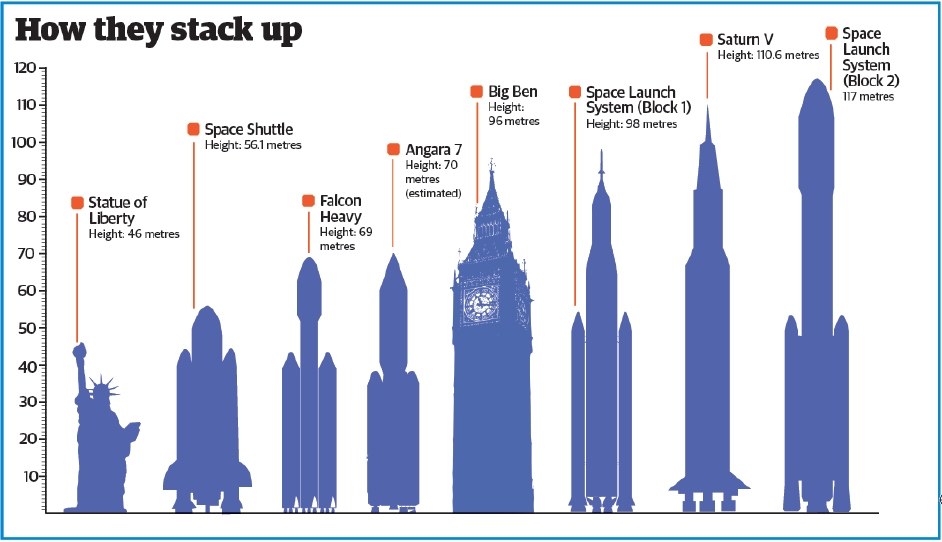
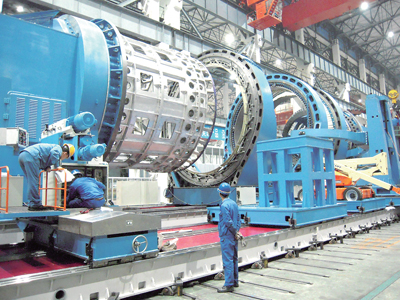
Σημείωση: Το μήνυμα αυτό γράφτηκε 11 χρόνια πριν. Ο συντάκτης του πιθανόν να έχει αλλάξει απόψεις έκτοτε.
Άγγελος
Επιφανές μέλος


ωραια σειρα βιντεο..πολυ απλη
Σημείωση: Το μήνυμα αυτό γράφτηκε 11 χρόνια πριν. Ο συντάκτης του πιθανόν να έχει αλλάξει απόψεις έκτοτε.
Άγγελος
Επιφανές μέλος


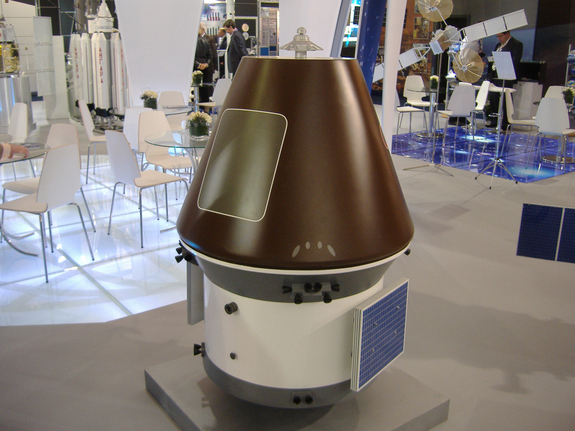
Russia's next new manned spacecraft will launch atop a different rocket than planned, one originally designed for only robotic spacecraft. The country's new six-cosmonaut spacecraft is due to lift off on its first test flight in 2018, using a launcher named Angara A5 developed for unmanned missions.
The new six-cosmonaut spacecraft, which is called the Advanced Crew Vehicle (ACV), was to have been launched by another new rocket, Rus-M. The Rus-M was to be an evolution of the Samara Space Center's Soyuz FG rocket that launches the Soyuz manned spacecraft. But Rus-M was canceled last year, while ACV was continued despite no launcher being identified for it.
As well as carrying six cosmonauts, the ACV will carry 1,100 pounds (500 kg) of cargo and could travel to the moon. Like the Soyuz capsule, which Russia currently uses to launch humans to orbit, the ACV will use rockets to land.
Rocket family
The Angara A5 is the heavy version of Angara, a family of four rockets based on a common core architecture. The Universal Rocket Motor (URM) is the common core that uses liquid oxygen and kerosene. The A5 has five of these cores combined for a total liftoff mass of 1.7 million pounds (770,000 kg), and the rocket will be able to put 53,900 pounds (24,500 kg) into a 124-mile (200 kilometers) orbit. [World's Tallest Rockets: How They Stack Up]
Soyuz is launched from the Baikonur Cosmodrome in Kazakhstan, and Angara will fly from the planned Baiterek facility, also at Baikonur, after its first few flights from Plesetsk Cosmodrome in northern Russia.
Vladimir Popovkin, Russia's Federal Space Agency director general, told SPACE.com, "The main launcher for the new spacecraft will be Angara," after explaining that earlier testing of the spacecraft’s technology, such as its launch escape system, will use the Ukrainian Yuzhnoye Design Bureau’s Zenit rocket.
ο angara πυραυλος θα τεσταριστει αυριο ,,
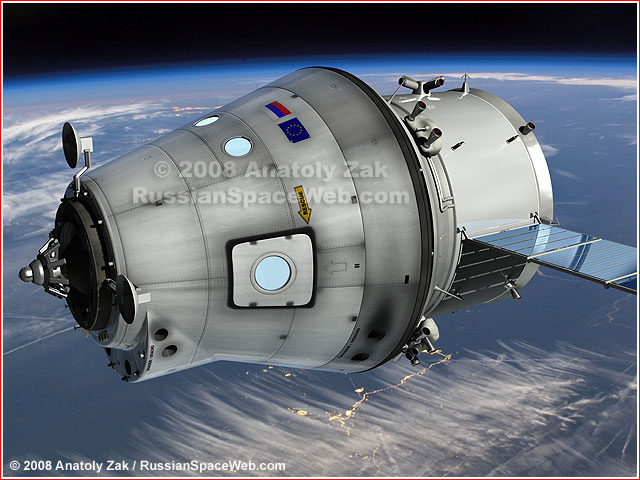
Σημείωση: Το μήνυμα αυτό γράφτηκε 11 χρόνια πριν. Ο συντάκτης του πιθανόν να έχει αλλάξει απόψεις έκτοτε.
Χρήστες Βρείτε παρόμοια
-
Τα παρακάτω 0 μέλη και 1 επισκέπτες διαβάζουν μαζί με εσάς αυτό το θέμα:Tα παρακάτω 42 μέλη διάβασαν αυτό το θέμα:
-
Φορτώνει...
-
Το forum μας χρησιμοποιεί cookies για να βελτιστοποιήσει την εμπειρία σας.
Συνεχίζοντας την περιήγησή σας, συναινείτε στη χρήση cookies στον περιηγητή σας.
 Αρχική Forum
Αρχική Forum
 Νέα Δημοσίευση
Νέα Δημοσίευση
 Προσωπικές Συζητήσεις
Προσωπικές Συζητήσεις
 Πολυμέσα - Gallery
Πολυμέσα - Gallery
 Συνδεδεμένοι Χρήστες
Συνδεδεμένοι Χρήστες
 Λίστα Αποκλεισμένων
Λίστα Αποκλεισμένων
 Υπεύθυνοι του Forum
Υπεύθυνοι του Forum
 Chat and Fun
Chat and Fun iSchool
iSchool
